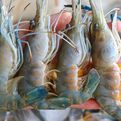Becoming a Sustainable Shrimp Farmer: A Complete Guide
Shrimp farming has emerged as a highly profitable industry in recent years, meeting the escalating global demand for seafood. However, this rapid expansion has led to environmental concerns, prompting a shift towards sustainable farming practices.
In this detailed guide, we'll explore the step-by-step process of establishing a sustainable shrimp farm, from planning and design to obtaining certifications. Whether you're a novice entrepreneur or an experienced aquaculture professional, this guide will provide valuable insights into building and certifying your digital aqua farm for long-term success.
Step 1: Planning and Designing Your Farm
Before diving into shrimp farming, meticulous planning and design are essential. Factors such as location, water management, feed management, and waste management must be carefully considered to ensure sustainability. Choose a location near a clean water source with suitable climatic conditions for shrimp farming. Implementing efficient water management systems, selecting sustainable feed options, and establishing robust waste management practices are critical aspects of the planning phase.
Step 2: Acquiring the Required Equipment
Acquiring the necessary equipment is the next crucial step in setting up your shrimp farm. Tanks, aeration systems, feeding equipment, and harvesting tools are essential for efficient farm operation. Opt for high-quality equipment that meets industry standards and promotes sustainability. Investing in energy-efficient systems can significantly reduce your farm's carbon footprint and operational costs over time.
Step 3: Obtaining Permits and Licenses
Compliance with regulatory requirements is paramount in the shrimp farming industry. Before commencing operations, obtain all necessary permits and licenses from local, state, and federal authorities. This often includes environmental assessments, health and safety inspections, and adherence to zoning regulations. Consult with legal experts or regulatory agencies to navigate the permitting process smoothly and ensure full compliance with legal requirements.
Step 4: Sourcing Your Shrimp
Selecting high-quality shrimp stock is essential for the success of your farm. You can source shrimp from reputable hatcheries or consider breeding your own stock. Ensure that the selected shrimp species are well-suited to your farm's environment and meet your production goals. Prioritize the health and genetic integrity of your shrimp stock to maximize yield and minimize disease risks.
Step 5: Implementing Sustainable Farming Practices
Implementing sustainable farming practices is the cornerstone of a successful shrimp farm. Focus on using sustainable feed options, minimizing waste generation, and maintaining optimal water quality conditions. Regular monitoring of shrimp health and environmental parameters is essential for early disease detection and prevention. Embrace innovative technologies and best management practices to enhance the sustainability and productivity of your farm.
Certifications for Sustainable Shrimp Farming
Certifications play a crucial role in validating your farm's commitment to sustainability and responsible aquaculture practices. Best Aquaculture Practices (BAP), Global Aquaculture Alliance (GAA), and Seafood Watch are prominent certification programs that set stringent standards for water quality, feed management, waste reduction, and social responsibility. Pursuing these certifications not only enhances your farm's reputation but also opens doors to premium markets and conscious consumers seeking sustainably produced seafood.
In conclusion, building and certifying a sustainable shrimp farm requires meticulous planning, adherence to best practices, and a commitment to environmental stewardship. By following the steps outlined in this guide and obtaining relevant certifications, you can establish a thriving digital aqua farm that balances profitability with environmental sustainability for generations to come.
Riley Sinclair (Digital Aqua Bear)
Hi! I'm Riley Sinclair (Digital Aqua Bear), and I'm exploring the world of digital aquaculture farms. Join me as I delve into innovative methods and sustainable practices for cultivating aquatic life in digital environments. Let's uncover the potential of digital aquaculture farms to revolutionize food production and environmental sustainability.
More From Digital Aqua Farm
Black Tiger Shrimp: Exploring Its Aquaculture and Complex Landscape
Riley Sinclair (Digital Aqua Bear)
Optimizing Aqua Farming: Exploring the Critical Role of pH Levels
Riley Sinclair (Digital Aqua Bear)
Shrimp Farming with Probiotics: Advantages and Considerations
Riley Sinclair (Digital Aqua Bear)
Shrimp Diseases in Thailand: A Complete Guide for Farmers
Riley Sinclair (Digital Aqua Bear)
Optimizing Aquafarming: The Interplay of Water Temperature and Dissolved Oxygen
Riley Sinclair (Digital Aqua Bear)
Challenges of Thai Shrimp Farming: Effective Strategies for Success
Riley Sinclair (Digital Aqua Bear)









